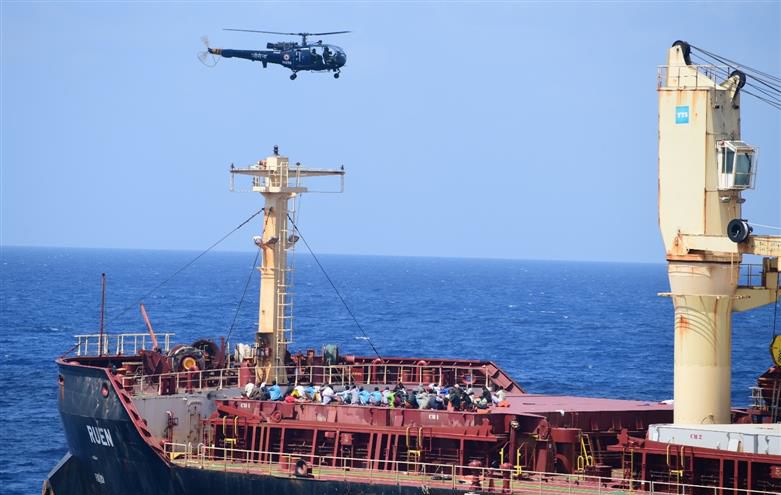Shining example of India’s maritime prowess

THE joint efforts made by the Indian Air Force (IAF) and the Indian Navy to free the merchant vessel MV Ruen from pirates in the Arabian Sea recently are a shining example of effective maritime security measures and inter-service collaboration. The successful operation saw the IAF’s C-17 heavy-lift aircraft execute a precision airborne drop of two combat boats and the Navy’s MARCOS commandos. Despite the hostile conditions, the IAF’s swift response and delivery played a crucial role in backing the Navy. This resulted in the surrender of 35 pirates and the release of the vessel and its crew. The proactive stance of the Navy, supported by the deployment of warships like INS Kolkata and INS Subhadra, demonstrates India’s readiness to safeguard global trade routes.
This isn’t the first time the Navy has showcased its capabilities in combating piracy. Over the years, it has undertaken a number of successful operations, including the rescue of the MV Suez in 2011 and thwarting piracy attempts in the Gulf of Aden in 2017. These actions not only protect the interests of the shipping industry but also contribute to international efforts towards maintaining peace and security at sea.
The Navy’s approach is in line with international conventions such as the United Nations Convention on the Law of the Sea (UNCLOS), which provides the legal framework for combating piracy and ensuring the safety of navigation in international waters. By adhering to the UNCLOS and collaborating with global partners, India has reaffirmed its commitment to upholding maritime law and order and cemented its place as the first responder on the high seas. As piracy continues to pose a threat to shipping trade, India’s timely operations serve as a model for other nations.
